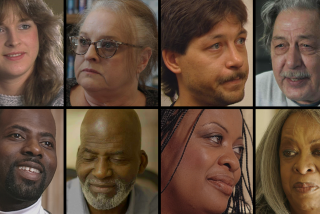Old Models Obsolete for Step-Families
- Share via
Now that the term family has almost replaced the flag and apple pie as a buzzwords in political circles for all that is holy and right in America, it’s odd that the fastest-growing kind of family--and arguably the most troubled--is also the most ignored.
Step-families this year for the first time ever will outnumber the old-fashioned nuclear family in this country, according to government estimates that are expected to be substantiated by the 1990 Census.
Yet societal expectations and stereotypes combine to sweep under the rug any problems inherent in those families, says Zena D. Polly, Ph.D., an Irvine clinical psychologist.
“The belief is that now that you have created a ‘whole family’--one with a father and mother and children--all is right with the world and everyone will live happily ever after,” she says.
Unfortunately, she says, the individual members of the new family believe it, as do too many mental health professionals, so when that pretty picture fails to materialize, the situation becomes disastrous.
What’s needed, she says, is the “creation of a whole new model of family. We’ve got to stop using the same ideal for step-families that we do for nuclear families. Otherwise, we’re doomed to be forever failing.”
Polly, who will discuss the whole process on May 8 at CPC Hospital’s “Family Focus” free lecture series ((714) 831-1800 for information), says her goal is to make step-families more aware that “they are different and their situation is difficult, but by no means impossible.”
Step-families can work extremely well, she says, when the expectations are realistic.
“The whole process of step-families is turned completely upside-down,” says Polly. “In the nuclear family, a couple have a courtship, get married, negotiate their roles, plan and then have children.
“The step-family condenses the process. The children are there first, and their presence overshadows everything else.”
Ironically, she says, the very qualities in a child that sustained a single-parent family become the most disruptive when the parent remarries.
“The child generally has become a companion and partner to a single parent,” she says, “and is required to assume more mature responsibilities, to become deeply involved in the daily ups and downs.
“Then, Mom or Dad remarries and immediately the child is expected to become ‘just a kid’ again, to back off.
“Well, it doesn’t work that way. The child resents being pushed aside and generally blames the new stepparent.”
One of the greatest paradoxes, according to Polly, is that the harder a new stepparent tries, the worse the situation can become.
“The child is thrown into a loyalty conflict,” she says, “especially if he or she genuinely likes the new parent.
“The child often feels he has to choose between the natural father or mother and the stepfather or mother.
“The child then pulls away, the stepparent feels rejected and runs the other way. Then, you face the distinct possibility of that parent becoming the ‘evil stepparent’ of myth and movies.
“We have to recognize that not all important members of a family live in the same house.”
Another change demanded of children, especially teen-agers, in a step-family, says Polly, is that they put their own growth on hold.
“Here they are at the age when nature meant for them to start flapping their wings and getting ready to leave the nest. They want to--and should--be spending more time with their peers, groping for their own identities, finding their own way.
“But stepparents, aided and abetted by the natural parent they married, want closeness, demand immediate bonding or they feel rejected.
“So, once again, it becomes a self-fulfilling prophecy. The child resents going on a family picnic when he could be at the beach with his friends. He blames the stepparent, who is blaming him, and it just escalates from there.”
The simple fact is, she says, “everyone gets caught in the middle and no one knows what to do about it.”
“The parent, haunted by the last divorce, fears another, so the tendency is to put on an act that ‘everything’s going to be OK.’
“And too often, when they try to get professional help, they go to someone who buys into the same myths about step-families that the couple have. So, they wind up looking everywhere for the root cause of the problem and ignore the obvious.”
The “obvious” is the fact that they got married.
The answer?
“Recognize that it takes time to cement this new family,” she says. “Most people will tell you it takes a year, but in truth it takes anywhere from three to five years before the members of a step-family feel solid and relaxed together.
“Be willing to confront each and every problem.
“Share your frustrations with others in the same boat; join a couples group.”
Most of all, she says, recognize that a step-family is not the family Norman Rockwell painted at Thanksgiving. It is different--”not bad, not good, just different, and OK.”
More to Read
Sign up for Essential California
The most important California stories and recommendations in your inbox every morning.
You may occasionally receive promotional content from the Los Angeles Times.













